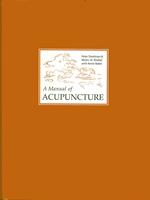- ホーム
- > 洋書
- > 英文書
- > History / World
Full Description
There are few places where mobility has shaped identity as widely as the American West, but some locations and populations sit at its major crossroads, maintaining control over place and mobility, labor and race. In Collisions at the Crossroads, Genevieve Carpio argues that mobility, both permission to move freely and prohibitions on movement, helped shape racial formation in the eastern suburbs of Los Angeles and the Inland Empire throughout the nineteenth and twentieth centuries. By examining policies and forces as different as historical societies, Indian boarding schools, bicycle ordinances, immigration policy, incarceration, traffic checkpoints, and Route 66 heritage, she shows how local authorities constructed a racial hierarchy by allowing some people to move freely while placing limits on the mobility of others. Highlighting the ways people of color have negotiated their place within these systems, Carpio reveals a compelling and perceptive analysis of spatial mobility through physical movement and residence.
Contents
List of Illustrations
Acknowledgments
Introduction
1 • The Rise of the Anglo Fantasy Past
Mobility, Memory, and Racial Hierarchies in
Inland Southern California, 1870-1900
2 • On the Move and Fixed in Place
Japanese Immigrants in the Multiracial Citrus Belt, 1882-1920
3 • From Mexican Settlers to Mexican Birds of Passage
Relational Racial Formation, Citrus Labor,
and Immigration Policy, 1914-1930
4 • "Del Fotingo Que Era Mio"
Mexican and Dust Bowl Drivers in
Metropolitan Los Angeles, 1930-1945
5 • From Citrus Belt to Inland Empire
Mobility vs. Retrenchment, 1945-1970
Conclusion
The Reemergence of the Anglo Fantasy Past
Notes
Bibliography
Index







